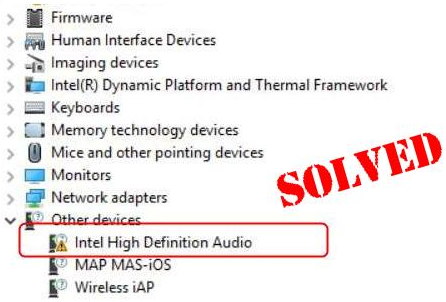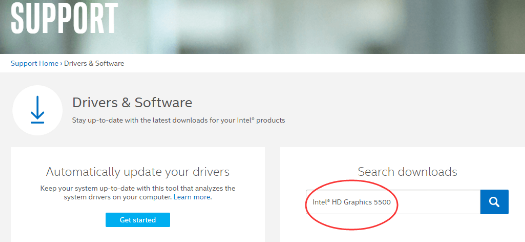Many users have reported audio issues such as no sound coming through HDMI, after installing the latest Windows update. Are you experiencing this problem?
If yes, then read this post to get help on how to get the sound back.
To fix the problem, you need the correct Intel HD audio driver. So the next question is, how can you get the correct audio driver?
Well, there are three ways to fix this error. In this post, we look at all of them.

Intel HD audio driver may refer to the audio controller driver on your PC or Intel Display audio driver.
You can update the Intel HD audio driver automatically. This is the most recommended method, as it is not only the easiest but also the fastest and the most accurate. Alternately, you can manually download and install the driver or choose to roll back the driver.
Now, let’s look the steps for each of these.
Solution 1 – Update Intel HD audio driver automatically
Automatic driver update tools offer many benefits, the most important ones being:
- You can update device drivers automatically
- The software scans and updates all outdated or missing drivers at one go
- The tool picks the right drivers for your device and operating system, so you won’t have to worry about installing an incorrect driver by mistake
- Automatic driver updates are 100% safe
Driver Updater is one of the best driver update tools out there. Outbyte Driver Updater will give you access to a database of over 1 million drivers. It will regularly scan your PC, suggesting new driver versions to install. Driver Updater contains drivers for a variety of Windows devices. With just one click, you can update drivers in your system.
Step 1
Click here to Install and launch the app
Step 2
Scan all devices
Step 3
Install or update drivers automatically
Solution 2 – Download & Install the driver manually
You can manually download the Intel HD audio driver from the manufacturer’s website. Alternatively, you can download the drivers from the website of your PC or laptop brand.
In this post, we detail the steps for downloading the driver from Intel’s website. You need to download the graphics card driver, since Intel bundles the audio driver with its graphics driver.
Here are the steps to follow:
- Open your internet browser and browse to download center
- Now type the model number of your Intel HD Graphics. For instance, we have used Intel HD Graphics 5500 in this example

- Choose the relevant operating system
- Select the latest version (usually, it is the first entry)
- Click on the .exe file to kickstart the download process
- Once you’ve downloaded the file, double-click it to install it
- Reboot Windows
Note: In case you don’t know which model you’re using, perform the steps listed below
- Right-click anywhere on the desktop and choose Display Settings
- Now click Advanced display settings
- Select Display adapter properties
- You’ll see the graphics model number within Adapter Type section under the Adapter tab
Once you know the graphics card model, search for it on Intel’s download center and download it.
Solution 3 – Roll back the driver
In case the issue didn’t resolve after updating the driver, you may want to roll back the driver, as this has worked for some users.
Here are the steps to follow:
- Press Win + R keys simultaneously
- Type devmgmt.msc in the run dialog box and press Enter
- In the Device Manager window, expand System devices. Now in the list that appears, search for your audio program, which could be either Intel High Definition Audio Controller or Smart Sound Technology Audio Controller
- Right-click the relevant program and click the Driver tab. Select Roll back driver
- Restart Windows
- Now the problem should be solved
Leave a comment below to tell us which of these solutions worked for you.

Leave a Reply